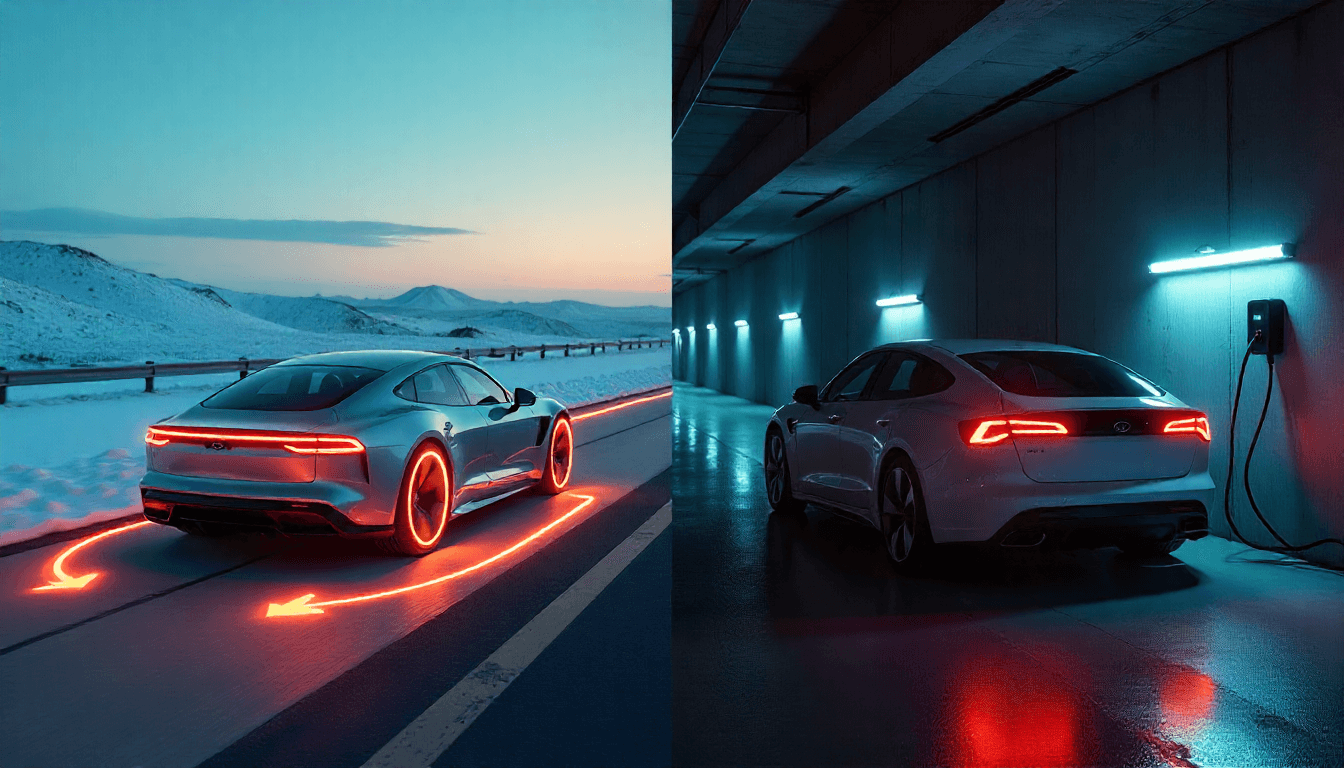Switching to electrified transport is no longer a distant future, but a real reality. However, for many drivers, a complete abandonment of petrol seems too radical a step. That's why hybrid cars have become the golden bridge between the familiar world of internal combustion engines and an all-electric future. They offer fuel savings and lower emissions. However, even in the world of hybrids, there is a fundamental division into two camps. These are the classic self-charging hybrids (HEVs) and the more advanced plug-in hybrids (PHEVs). The argument hybrid vs plug-in hybrid is particularly relevant for Russia. Our country has a unique set of challenges: harsh climate, huge distances and unevenly developed charging infrastructure. Consequently, choosing between these two technologies is not just a matter of personal preference. It is a serious analysis that must take into account the realities of operation.
Classic Hybrid (HEV): autonomy and simplicity
Classic Hybrid (Hybrid Electric Vehicle) is a technology popularised by the Toyota Prius. Today it is used on a huge number of vehicles. Its main philosophy is maximum simplicity and complete autonomy.
Operating principle: complete self-sufficiency
The HEV is based on a tandem of a petrol engine and a small electric motor. These are powered by a compact battery. It is important to realise that this battery cannot be charged from an outlet. It only replenishes energy as you drive. Firstly, from the running petrol engine. Secondly, through regenerative braking, when the energy of deceleration is converted into electricity. The electric motor in such a system most often helps the internal combustion engine at times of peak loads. For example, when starting from a place and intensive acceleration. This allows the petrol engine to operate in a more economical mode.
Advantages in Russian conditions
- Independence from infrastructure: This is the main and undeniable trump card of HEVs. Such a vehicle requires absolutely no special infrastructure. It works wherever there is a regular petrol station. For a country with our distances, this is a critically important factor.
- Efficiency in the city: In the urban cycle with frequent stops and braking, the hybrid reaches its full potential. The regeneration system constantly recharges the battery. As a result, fuel economy in traffic jams can reach 30-40% compared to its peers.
- Reliability in freezing temperatures: In winter, the HEV behaves like a normal car. The petrol engine is always ready to work and warm up. The small battery suffers less from frost, as its main task is to help, not to be the main source of traction.
Disadvantages
The main disadvantage is limited economy on the motorway. The role of the electric motor is minimal when travelling evenly at high speed. Therefore, the hybrid's fuel consumption on the motorway will be only slightly lower than that of a similar petrol car.
Plug-in hybrid (PHEV): two cars in one
The Plug-in or Plug-in Hybrid Electric Vehicle is the next evolutionary step. This technology offers a two-in-one usage scenario: an electric vehicle for everyday use and a conventional car for long journeys.
The principle at work: the best of both worlds?
The PHEV's key difference is its significantly larger battery. It can and should be charged from the external power grid: at home, at work or at a public charging station. Thanks to this, the PHEV is capable of travelling a considerable distance (50 to 100 kilometres on average) on pure electric power without starting the internal combustion engine. When the battery charge runs out, it turns into a conventional hybrid.
Advantages in Russian conditions
- The perfect urban commute: For a metropolitan city dweller with daily mileage within 50-70 kilometres, PHEV can become a full-fledged electric car. If you charge it every night, travelling to work, shopping and errands will be practically free.
- Flexibility for long journeys: Unlike an electric car, the PHEV does not have the 'range anxiety' problem. The petrol engine is ready to start working at any time. Therefore, you can safely go travelling any distance with it.
Disadvantages and challenges for Russia
- Dependence on an outlet: For a PHEV to be economically viable, it needs to be charged regularly. This requires constant access to an outlet - in a private home, car park or office. Unfortunately, public charging infrastructure outside Moscow and St. Petersburg is still underdeveloped.
- The effects of cold: Severe Russian winters are a serious test for PHEVs. Firstly, the driving range on electric power in cold weather may be reduced by 30-50%. Secondly, the petrol engine will be used more often to heat the interior and battery. As a result, the "electric" mode becomes shorter in winter.
- High cost and complexity: PHEVs are technologically more complex and, as a result, more expensive than conventional hybrids.
Hybrid vs plug-in hybrid: decisive factors for Russia
So, which option to choose? The answer to the question hybrid vs plug-in hybrid depends on your usage scenario.
Scenario 1: Metropolitan dweller
You live in Moscow or another large city. You have the opportunity to charge your car at night in a car park or in the yard. Your daily mileage rarely exceeds 60 kilometres. Verdict: A PHEV is the perfect choice for you. You'll be driving on electricity most of the time, saving you huge amounts of money on petrol.
Scenario 2: Resident of the regional centre
You live in a regional centre, you often drive around the city, but regularly go to your dacha or to your relatives in a neighbouring town. You do not have stable access to a power socket. Verdict: The classic HEV is your versatile and reliable assistant. It will give you maximum economy in the city without any infrastructure requirements.
Scenario 3: The long-distance traveller
Your element is the motorway and travelling thousands of kilometres. City driving takes up a small part of the mileage. Verdict: The HEV would be a more pragmatic choice. It does not require searching for power outlets in unfamiliar places. Its simplicity and autonomy on a long journey will be more important.
Subscription: test drive hybrid technology without risk
Choosing between an HEV and a PHEV is a big decision. If you make a mistake, you could either overpay for unnecessary technology or not get the savings you want. The ideal way to resolve the dilemma hybrid vs plug-in hybrid - is to try both technologies in real life. This is the opportunity offered by a car subscription.
- Practice Test: Services like GetCar allow you to borrow a classic hybrid for a few months. You can then change to a plug-in hybrid.
- Lack of risk: You will be able to evaluate in practice whether it is convenient for you to charge the PHEV, how much range it provides in winter, and how significant the savings are. You won't risk your money on an expensive purchase.
- Professional Service: The service takes care of all the maintenance of complex hybrid systems.
In conclusion, both hybrid technologies have a right to life in Russian conditions, but are suitable for different tasks. The classic hybrid (HEV) is a versatile, reliable and simple soldier, ideal for most regions and operating scenarios. Plug-in hybrid (PHEV) is a highly efficient and economical tool for disciplined residents of large cities with access to charging infrastructure.

 Hybrid vs plug-in hybrid: which technology is suitable for Russian conditions">
Hybrid vs plug-in hybrid: which technology is suitable for Russian conditions">
